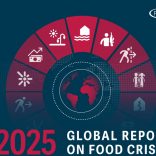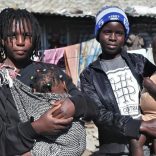Acute food insecurity affects nearly 4.9 mln people in Mozambique during 2024/2025 lean season: ...
Mozambique: Cabo Delgado needs $1.2M to tackle rainy season impacts – INGD

All photos: Conselho Executivo de Cabo Delgado
Mozambican authorities on Monday admitted difficulties in mobilising the 78.3 million meticais (US$1.25 million at current exchange rates) needed to mitigate the damage caused by the current rainy season in Cabo Delgado, one of the provinces most commonly affected.
“It’s a forecast. We don’t have it, but we are mobilising resources to respond to this scenario,” said Marques Tamadune Naba, delegate of the Institute for Disaster Risk Management and Reduction in Cabo Delgado, speaking to journalists in Pemba at the end of the presentation of the rainy season contingency plan.
During the Emergency Operations Committee meeting, which brought together members of the provincial government and partners, the official said that the institution does not have the necessary funds available and is currently mobilising support from various stakeholders. The funds are needed to support more than 200,000 people in rural and urban areas threatened by the rainy season throughout the province of Cabo Delgado, according to the civil protection scenario on the table.
“Around 200,000 people are at risk. We are talking about strong winds, rain and also flooding in villages and some areas that we have mapped and believe to be at risk,” said Marques Tamadune Naba.
READ: Mozambique: Over 113,000 Cabo Delgado families displaced by rebels need support – Watch

On 12 September, Mozambican authorities warned of “large-scale” flooding in the country and flooding of at least four million hectares of agricultural land during the rainy season, which began in October.
“In the second period [of the rainy season], which is January, February and March, we think we will have rains, we will have floods of great magnitude, we classify it as a high-risk regime, especially in the Incomáti, Maputo and Limpopo basins,” said Agostinho Vilankulos, national director of Water Resources Management, on the sidelines of the National Climate Outlook Forum for the 2025/2026 rainy season in Maputo.
According to the official, the dams in Mozambique’s neighbouring countries, including South Africa and Eswatini, are at 99% of their storage capacity and therefore have little capacity to accommodate additional water, a situation that will force runoff and consequent flooding in the country.
“If the dams are full, then they have no capacity to take in more water, so any rain that falls in neighbouring countries will turn into runoff and come into our country,” warned Vilankulos, pointing to the municipalities of Matola, Maputo, Beira and Quelimane as being at “high risk of flooding”.
He added that the agricultural sector is also expected to be affected by the rains, with at least four million hectares at risk.
At the same event, Isaías Raiva, a climatologist at the National Institute of Meteorology, said that rains will be recorded throughout the country between January and March, with a major impact on the southern part of Mozambique, in addition to “some dry periods”.
Américo José, from the Mozambican National Institute of Health, predicted a higher incidence of malaria and diarrhoea in the provinces of Nampula in the north, and Zambézia and Tete in the centre of the country during the rainy season, considering that climate change represents a “direct and indirect threat to the health sector”.
Hiten Jantilal, national director of agriculture, at the time announced preventive measures in view of the approaching rains, including recommendations to farmers on “when to start sowing and how to minimise the risk of pests and diseases”.












Leave a Reply
Be the First to Comment!
You must be logged in to post a comment.
You must be logged in to post a comment.